What a show!
Last weekend we spotted female European wool carder bees (so named because they collect or card plant hairs for their nests) buzzing in and out of our snapdragons.
The bees, about the size of honey bees, are mostly black and yellow. The females range in body length from 11 to 13 millimeters, while the males are 14 to 17 mm.
The males are very territorial. As we mentioned in a previous Bug Squad blog, they put the "terror" in territorial. The males bodyslam other insects, as they try to protect their turf, per chance to mate with the females. We've seen the males terrorize the much larger Valley carpenter bees--bodyslamming them, dislodging them and chasing them away.
The European wool carder bees, Anthidium manicatum, are natives of Europe. Their "immigrant ancestor" was first detected in the United States (New York) in 1963, and the species spread west. It was first recorded in California (Sunnyvale) in 2007.
The bee, according to research entomologist Tom Zavortink of the Bohart Museum of Entomology at UC Davis, was accidentally introduced into New York state. It was not purposefully introduced to pollinate alfalfa, as some reports allege, he said.
Writing in a 2008 edition of the Pan-Pacific Entomologist, Zavortink and fellow entomologist Sandra Shanks, now of Port Townsend, Wash., pointed out that several papers “have documented its spread from neighboring areas in the northeastern United States and southern Canada” and that the species has since crossed the country. It was confirmed in Colorado in 2005, Missouri in 2006, and Maine, Michigan, Maryland and California (Sunnyvale) in 2007, the entomologists wrote. Records show it was first collected in Davis on July 26, 2007.
It was well established in the Central Valley by 2008, according to Lynn Kimsey, director of the Bohart Museum of Entomology and UC Davis professor of entomology.
In Vacaville, we first encountered the European wool carder bee in the spring of 2010.
Its plant preferences include lamb's ear (Stachys byzantine, in the mint family Lamiaceae), a perennial grown for its fuzzy, silvery gray-green foliage. It's also been collected in the figwort/snapdragon family (Scrophulariacae) and the pea and bean family (Fabaceae), according to the Zavortink-Shanks research.
Usually the European wool carder bees are hanging around our foxgloves and catmint (neither is blooming yet) and our lavender (blooming but being ignored).
But snapdragons? We've never seen them foraging on snapdragons (Antirrhinum) until now. That's because we've never planted snapdragons until this spring!
Attached Images:
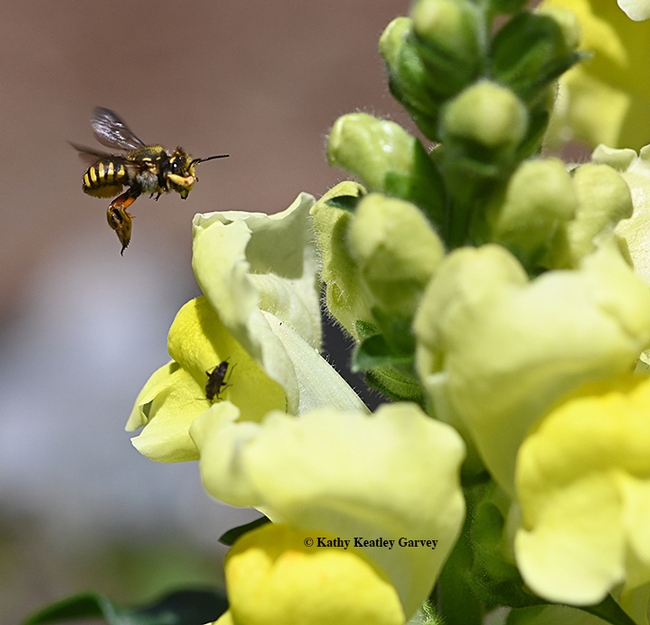
A male European wool carder bee patrolling snapdragons in Vacaville, Calif. (Photo by Kathy Keatley Garvey)
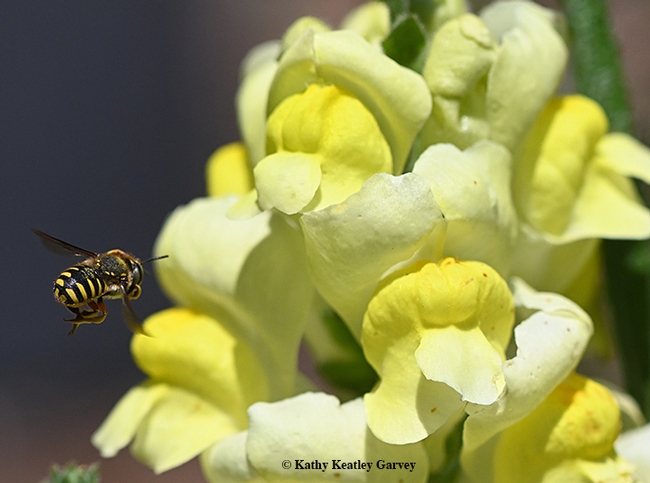
The European wool carder bee is about the size of a honey bee. (Photo by Kathy Keatley Garvey)
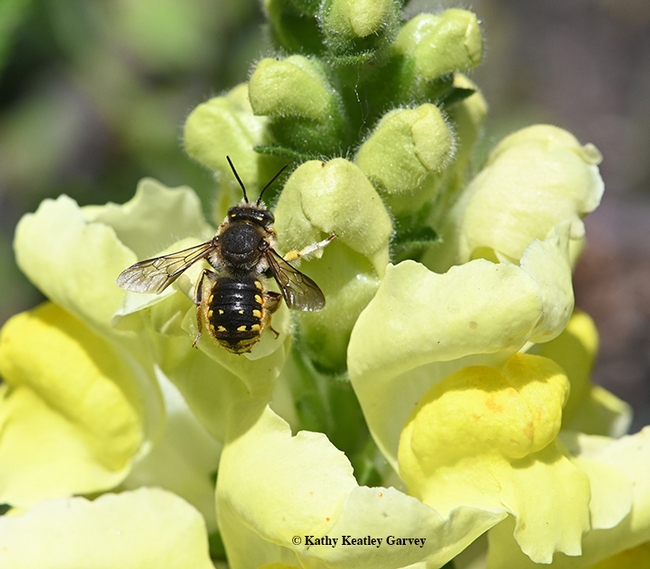
Dorsal view of the European wool carder bee as it rests on a snapdragon. (Photo by Kathy Keatley Garvey)
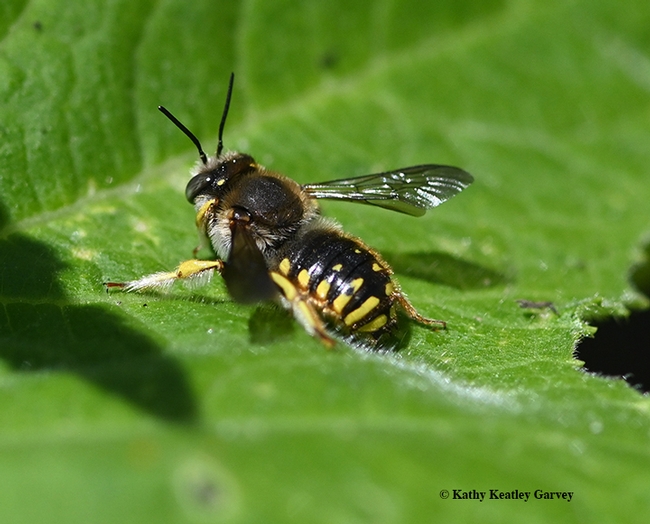
All that patrolling makes a fellow tired. A male European wool carder bee rests on a leaf. (Photo by Kathy Keatley Garvey)
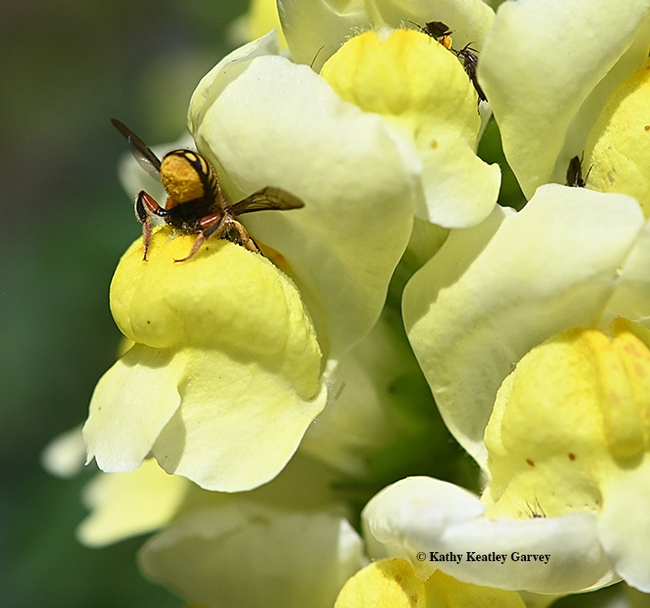
Bottoms up! A female wool carder bee foraging in a snapdragon. (Photo by Kathy Keatley Garvey)